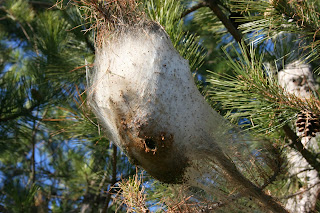 1. Aphids- Ahpididae sp.
1. Aphids- Ahpididae sp.They are among the most destructive insect pests on cultivated plants. About 4,400 species are known, all included in the family Ahpididae.
250 species are very harmful pests for agriculture and forestry as well as gardeners. Aphids are ladybug's favourite food. If you have any ladybugs I recommend you place them where the aphids are.

2. Large white - Pieris brassicae
The large white is common throughout Europe,
North Africa, Asia and even through the Himalayas. They are often found in agricultural areas, meadows and parkland. The large white eggs appear as a pale yellow colour. Their wing span reaches 5 to 7 cm on average.
3. Whiteflies - Aleyrodidae sp.
There a more than 1500 species of whiteflies.
They are small hemipterans that typically feed on undersides of plant leaves. The stage before the adult is called a pupa. Though it shares little in common with the pupal stage.

4. Garden snail - Cornu aspersum
Garden snails are one of the most common species of snails. The snail is relished as a food item in some areas, but is also widely regarded as a pest in gardens. You normally see them after a shower or a storm. The female lays around
80 pearly-white eggs. You normally find them under damp logs, or in the soil.
5. Colorado potato beetles - Leptinotarsa decemlineata

It's annoying that these beetles are such pesky garden pests, as they are very pretty insects. They are stripped in a bright yellow and orange uniform. Their favourite plants to invade are: aubergines, peppers, tomatoes and potatoes. Signs of Colorado potato beetle infestations include ragged leaves and in serious cases tripped stems.
Check out my video of wildlife in February








